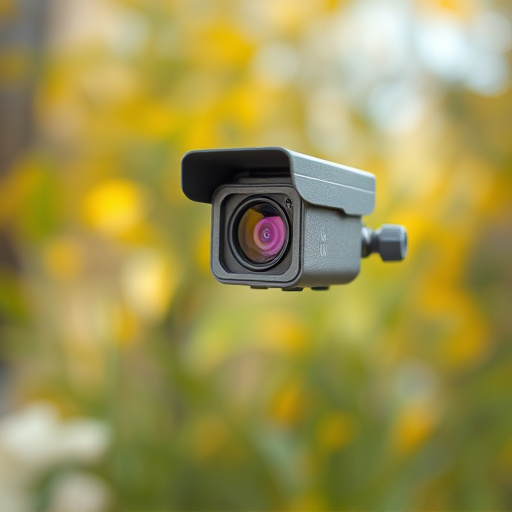Optical sensor technology enhances privacy for small hidden cameras in bedrooms, offering high-resolution, movement-sensitive surveillance. Professionals use advanced techniques including infrared/thermal imaging and RF signal detectors to identify such cameras, prioritizing ethical practices with transparency and consent for peace of mind.
In an era where privacy is a paramount concern, understanding optical sensor technology and its potential misuse is crucial. This article delves into the world of small hidden cameras in bedrooms, exploring advanced detection techniques and professional methods. From identifying covert surveillance devices to navigating ethical considerations, we provide essential strategies for comprehensive coverage against these unseen threats. Stay informed as we unravel the complexities of bedroom surveillance sweeps.
- Understanding Optical Sensor Technology for Bedrooms
- Identifying Small Hidden Cameras: Techniques and Tools
- Professional Methods to Detect Unseen Devices
- Ethical Considerations in Bedroom Surveillance Sweeps
- Effective Strategies for Comprehensive Coverage
Understanding Optical Sensor Technology for Bedrooms
Optical sensor technology plays a crucial role in enhancing privacy and security, especially with the prevalence of small hidden cameras for bedrooms. These sophisticated devices utilise advanced optical sensors to detect and capture footage discreetly, ensuring peace of mind for homeowners. By understanding how these sensors work, users can make informed decisions when choosing bedroom surveillance equipment.
The key component in optical sensor detection is the image sensor, which captures light and converts it into an electronic signal. In the context of small hidden cameras, high-resolution sensors enable clear and detailed video footage. Modern optical sensors are highly sensitive, capable of capturing even subtle movements or changes in light, making them ideal for bedroom environments where discretion and clarity are paramount.
Identifying Small Hidden Cameras: Techniques and Tools
Identifying small hidden cameras has become a critical concern, especially in private spaces like bedrooms. Professionals employ advanced techniques and tools to detect these covert devices. One common method involves utilizing specialized optical sensors that can pick up on infrared or visual disturbances not visible to the naked eye. These sensors are adept at uncovering tiny cameras disguised within everyday objects, such as picture frames or clock radios.
For more comprehensive inspections, thermal imaging cameras are often utilized. They detect heat signatures and can highlight anomalies, making it easier to pinpoint hidden cameras. Additionally, experts use RF (radio frequency) signal detectors to trace electromagnetic emissions from active cameras, a technique particularly useful for identifying wireless devices in bedrooms or other enclosed areas. These methods ensure thorough security assessments, offering peace of mind in personal spaces.
Professional Methods to Detect Unseen Devices
In the realm of security and privacy, professional methods to detect unseen devices like small hidden cameras in bedrooms have evolved significantly. Expert investigators employ advanced optical sensor technologies that can identify covert surveillance equipment, which might otherwise remain undetected by the naked eye. These professionals use specialized tools, such as infrared and thermal imaging cameras, to sweep areas for any signs of malicious activity or hidden devices.
Infrared sensors, in particular, are adept at spotting heat signatures that small hidden cameras emit, making them valuable assets in identifying these clandestine devices. Thermal imaging technology allows experts to visualize differences in temperature, helping them pinpoint objects or components that might be embedded within walls or other hiding places. This comprehensive approach ensures that any potential threat, especially tiny hidden cameras for bedrooms, is thoroughly and professionally addressed.
Ethical Considerations in Bedroom Surveillance Sweeps
When conducting optical sensor detection sweeps, especially in sensitive areas like bedrooms using small hidden cameras, ethical considerations come to the forefront. Privacy is a paramount concern; capturing and storing intimate moments without consent is a grave violation. It’s crucial for professionals to adhere to strict ethical guidelines and legal frameworks that govern surveillance practices.
In the context of bedroom surveillance with small hidden cameras, transparency and informed consent are essential. Individuals must be made aware of the presence of such devices, understanding how their data will be used and protected. This ensures a balance between security measures and respecting individual privacy rights, fostering trust in the methods employed for optical sensor detection sweeps.
Effective Strategies for Comprehensive Coverage
To ensure comprehensive coverage during optical sensor detection, especially when dealing with small hidden cameras in bedrooms, professionals employ several effective strategies. One key method is utilizing specialized equipment designed to detect hard-to-spot devices. This includes infrared and UV sensors that can uncover hidden cameras by identifying unusual heat signatures or specific electromagnetic emissions.
Additionally, a systematic sweep approach is vital. This involves a step-by-step examination of every nook and cranny, from wall outlets and switch plates to furniture and curtains. Professionals also recommend checking common hiding spots like behind mirrors, pictures frames, and electrical appliances. By combining advanced technology with meticulous inspection, these strategies ensure that even the tiniest hidden cameras in bedrooms are detected, providing peace of mind for homeowners concerned about privacy.
Optical sensor detection techniques, especially tailored for detecting small hidden cameras in bedrooms, have become essential tools in ensuring privacy and security. With the right professional methods and ethical considerations, these sweeps can uncover sophisticated surveillance devices. By combining advanced technology with comprehensive coverage strategies, individuals can protect their personal spaces from unwanted intrusions. Remember that staying informed about these techniques is crucial to safeguarding your privacy in today’s digital age.
